In the baker’s world, silicone baking mats are emerging not only as game-changers but also as revolutionizers that re-imagine providing solutions to baking duties. They not only satisfy beginners with their amateur baking efforts, but they also serve professionals who count on them every day as part of their modern kitchens worldwide.
Through this article, we will endeavor to delve deeper into silicone baking mats, outlining their advantages, uses, and why every baker should own one.
What is a Silicone Baking Mat?
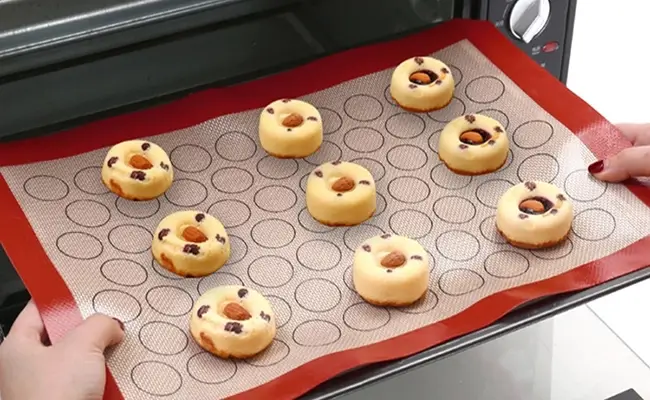
Silicone mats are grease-resistant and handy. Silicone baking mats are BPA free, compared to the old days when you needed microwave cookware with a non-stick baking surface made from food grade, readily reusable silicone mats. It is a woven textile that is made of a material used as a substitute for waxed paper and grease pans, and hence, it brings about an environmentally friendly way of baking. It can be stated to initially have a high temperature as one of its basic parameters, which makes it an efficient and stable product for an oven.
The silicone baking mat is reusable, and can work as an efficient replacement for parchment paper, and aluminum foil for the baking of cookies, pastries, and other baked goods. They ensure that thorough heat is transferred, act as a barrier between the food and the pan, and are easy to clean.
Therefore, the no-stick silicone mats are likely to be the choice of the baking teams. Baking enthusiasts of every stripe have the option of choosing the size they need, and still have available models that withstand high temperatures, perfect for dry and frozen foods for cooking, roasting, and freezing.
Parchment Paper vs Silicone Mat: Which Is Better for Baking?
Bakers have to make the tough decision to either use a Silpat baking mat (Silicone Baking Mat) or parchment paper on an everyday basis. Similarly, they can do different things, especially in kitchens for baking, and give some advantages. In this section, I will outline the difference between parchment paper and silicone mats as well as the purpose of each. By comparing the two, you will get a straight forward idea about which one is the better option for you when it comes to baking.
Parchment Paper
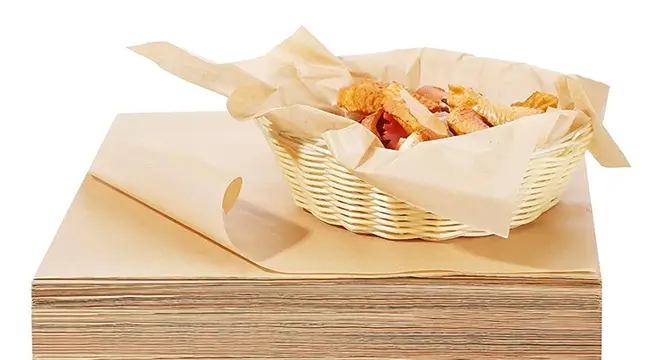
A thin, heat-resistant paper that is frequently used in baking is parchment paper. It is made from pulp that is treated with acid during production, giving it non-stick properties and heat resistance. Many bakers, use parchment paper to line cake baking pans, bake cookies, and catch drips from glazing or icing cakes.
Parchment paper brings advantages to the baking world as this tool is a non-stick surface, it can withstand high temperatures, and it is disposable, which means you can use it once and then discard it.
Silicone Mats
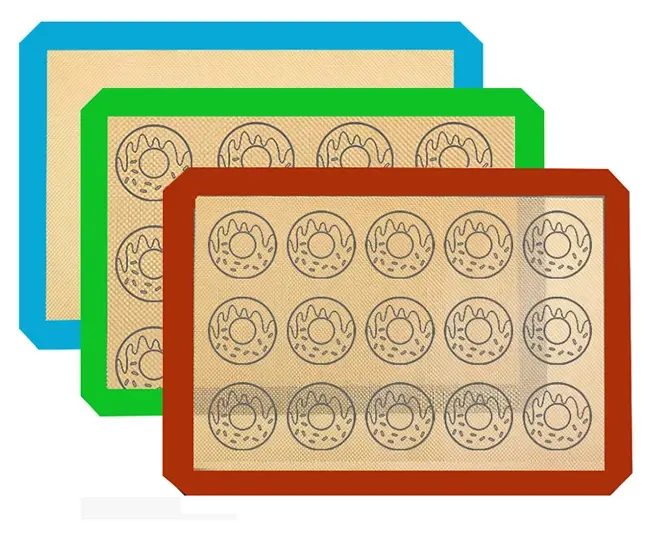
Another product is reusable mats manufactured from food-grade silicone, which are also called silicone baking mats, silicone baking sheets, or silicone baking liners. The mats are made of silicone to replace costly parchment paper and offer several benefits. One of those advantages is that they also have a non-stick surface, just like parchment paper. They can also be used in high temperatures. Additionally, silicone baking mats are easy to clean and maintain, and they can be reused.
Parchment paper and silicone baking mats can be useful in the kitchen, it depends on what kind of benefits each is looking for. The use of parchment paper is easy to do and provides users with good slip resistance. On the contrary, a silicone baking mat underneath is reusable, environmentally friendly, and makes it possible to get consistent results.
In the end, the decision between parchment paper and silicone mats will depend on your cooking style, money you can afford to spend, and your desire for a sustainable world. Try both to see what will be the best option based on the baking necessities you have.
Step-by-Step Guide: How to Use Silicone Baking Mats
A silicone baking mat can be used for kneading dough, baking cakes, and baking cookies. If you wish to create cookies, just put the mat flat on a baking sheet to use as a pan liner. Before setting the cookies down, mist your mat with non-stick spray if you are concerned that they will not stick.
PREPARATION

Wash your silicone baking mat with warm, soapy water before using it for the first time. The silicone mat should be fully dry and clean.
PLACEMENT
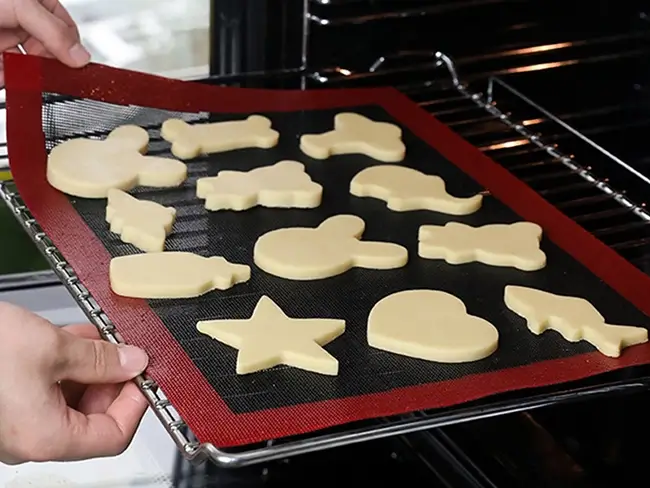
To start, lay the silicon baking sheet down on a baking rack. Put the mat down and let it be the lining for the baking sheet. It should conceal all of the surface. Make certain that the silicone mat is positioned in the exact middle of the oven rack for a well-baked end result.
Line the baking sheet with wax paper and place it on the middle oven rack to bake in accordance with the recipe. Remove the pan from the oven and place it on a wire baking rack ( optional ).
PREHEATING
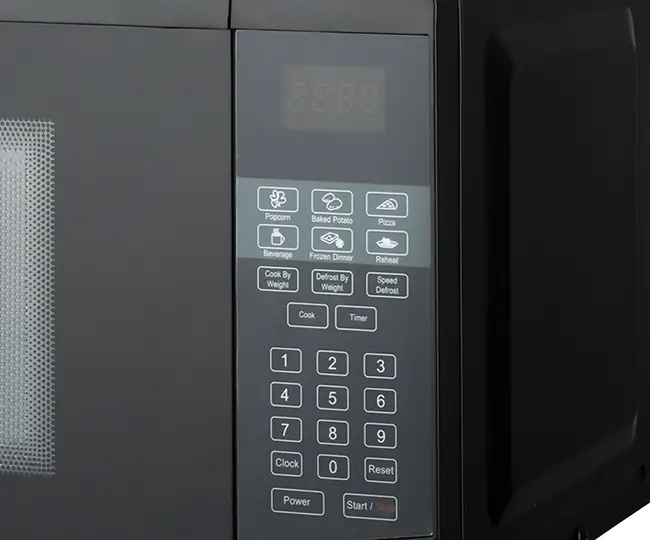
If your recipe includes preheating the oven or dropping the silicone baking mat in the oven first, make sure to preheat the oven prior to baking. The silicone mats retain heat and are heat-resistant up to around 450° F (230° C), based on the manufacturer’s instructions.
BAKING

Once the oven is preheated, place your baking goods (cookies, pastries, vegetables, etc.) on the silicone baking mat and use a rubber spatula to spread the batter evenly. The non-stick surface will not allow your food to adhere to the surface, and the grease will be spread uniformly so the food can brown evenly.
MONITORING
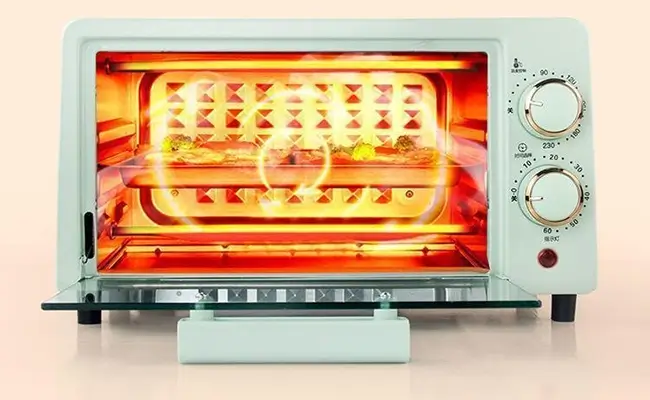
Frequently monitor the temperature of your baked beans by using the oven door peeps. Although silicone baking mats may shorten baking time by a few minutes, pay attention to whether it’s done or not a couple of minutes before normal cooking time ends. It evidently inhibits the risk of browning seen on the bottom of your food.
COOLING

When cooked, take the baking pan out of the oven and let it cool on the silicone mat for a few minutes. The non-stick surface saves you time and effort by releasing baked goods without your needing to deal with sticky surfaces.
Wait for the lollipops to cool down a bit before you take them out of the oven and let them finish cooling slightly on another baking rack.
CLEANING
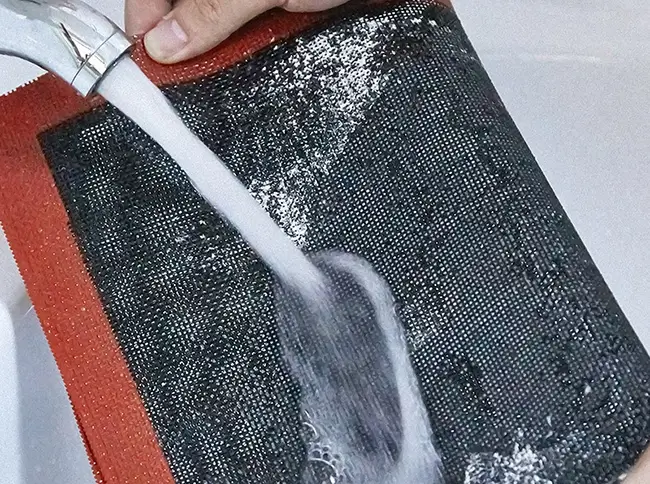
When done, take the cold silicone baking sheets out and wash them, as they’ll be brittle when hot.
To clean, wash with warm water, soapy water, or put inside the dishwasher for easy cleaning.
To have this silicone mat flat or roll it up according to space availability in the kitchen.
7 Reasons Why You Should Switch to Silicone Baking Mats
Nonstick surface
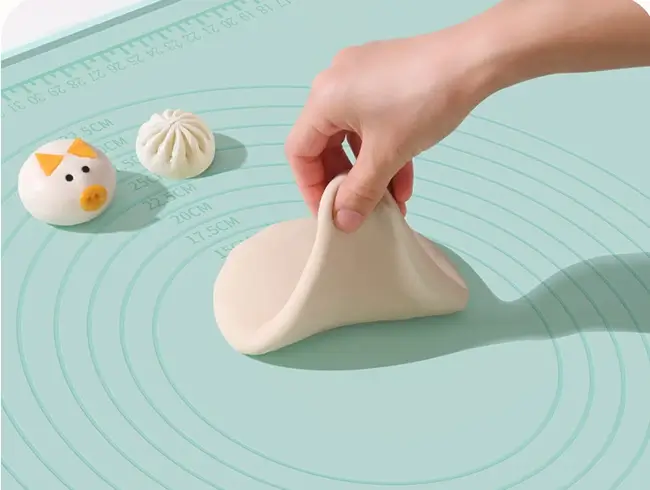
Firstly, silicone baking mats rule the baking world thanks to their non-stick surface. Contrasting to parchment paper or butter brushed baking sheets, silicon mats prevent food from sticking completely,
Heat Resistant
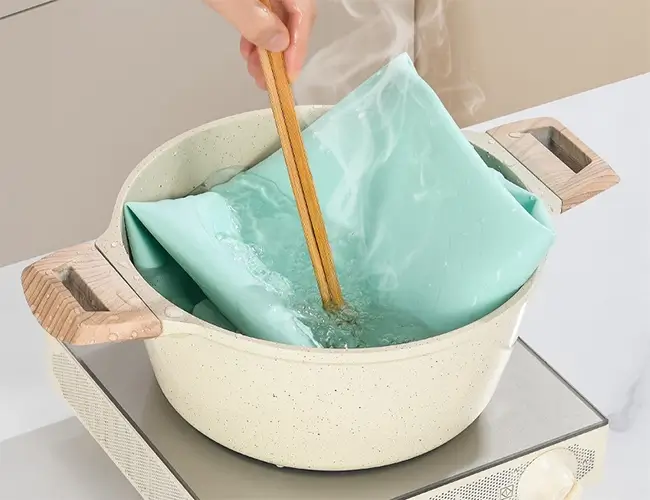
Silicone mats are an alternative to the usual baking paper that can withstand temperatures, which prevents vegetarian baking from hot spots that may affect even and uniform baking. Thus, you will be able to bake everything from homemade breads to delicate pastries, and you will have more consistent results every time you bake!
Feel free to lightly toss those ingredients in a pan; dull the sharp edges and gone will be those worries of overdone or undercooked centers.
Reusable and Environmentally Friendly
Unlike disposable parchment paper or aluminum foil, silicone baking mats are reusable and eco friendly. When properly maintained and cared for, they often last years instead of a few weeks, which means fewer people discarding them and consequently less waste, saving you money in the meantime. Just throw them in the water with warm, soapy water and rinse them clean, or just heat the dishwasher for you to enjoy washing-free operation.
Versatility
Silicone baking mats are able to cover the fields of cooking, oven safe and microwave safe due to its ability to be used for the majority of standing orders and cooking tasks at the same time. You will surely save some by using these cooking surfaces that take care of everything from baking cookies to pastries, roasting vegetables, and even your favorite candy.
It contains a fiberglass grid that does not retain heat the way metal pans do.They can also be used as a non-slip surface for rolling out dough, making them a multi-functional kitchen essential.
Healthy Cooking Options
Silicone baking mats provide a healthier cooking option compared to greased pans or parchment paper coated with cooking spray. They eliminate the need for added oils or fats, reducing calories and making your baked goods lighter and more nutritious. Plus, they are food-grade safe and BPA free, ensuring peace of mind when cooking for your family.
Easy Clean silicone baking mats
After use, silicone baking mats can be easily cleaned with warm, soapy water or placed in the dishwasher for convenience. This eliminates the need for scrubbing pans or dealing with stuck-on food residues.
Cost-Effective
While silicone baking mats may have an initial cost, their reusability makes them cost-effective in the long run compared to disposable options like parchment paper or foil.
Invest in high-quality silicone baking mats and experience the convenience of hassle-free baking and seamless kitchen cleanup.
Things to Consider in Buying Silicone Baking Mats
1. Choose the Right Size

Various size silicone baking mats can be fittingly placed into most baking pans. Make sure to choose the mat exactly the size of such a pan, as it will provide optimal coverage and performance.
2. Use Parchment Paper for High-Sugar Recipes
With silicone mats, which are usually made without sticky components, it is not recommended to use a recipe that contains a lot of sugar, such as caramelized desserts or some sugary cookies, because these may cause the surface to stick to them. It is recommended to place a strip of parchment paper on the silicone mat prior to the baking process to avoid this matter.
3. Avoid Abrasive Cleaners
To prolong the life of your silicone baking mat, avoid using abrasive cleaners or scouring pads. Instead, gently wash the mat with warm, soapy water and a sponge or soft cloth.
4. Preheat the Oven Carefully.
Cleaning your non-silicone mats properly will mean you do not use any harsh agents for cleaning or scouring pads/products. Picking on harsh soaps and a scrubbing brush, all you need this time is warm water and a sponge or soft cloth, and you are good.
5. Use the Mat for Non-Baking Purposes

Silicone baking mats are not just for baking! They can also be used as a surface for rolling dough, kneading dough, or even as a non-slip grip under cutting boards.
They make a great work surface for food and craft projects. Silicone mats need no added oil, so they are calorie friendly!
6. Store Properly
In order to store a silicone baking mat in top shape, you can keep it flat or roll it lightly up. Don’t bend or crease the mat, but rather use a folded sleeping mat to avoid damaging its integrity over time.
7. Use Cooking Spray Sparingly
Non-sticky silicone mats can be a great help, but using cooking spray or oil is recommended for certain dishes that have a problem sticking. Nonetheless, spray it in a small amount to avoid the absorption rate of the carpet.
8. Check Compatibility with Your Oven
However, most silicone baking mats are oven-safe. Therefore, read through the instructions provided by the manufacturer to avoid overheating or damaging your oven.
By applying the above-mentioned tips, you are sure to take the maximum advantage of your silicone baking mat and enjoy the best for your baking and cooking times. Use these techniques as a fundamental component to help you i your baking journey!
Cleaning Your Silicone Baking Mat
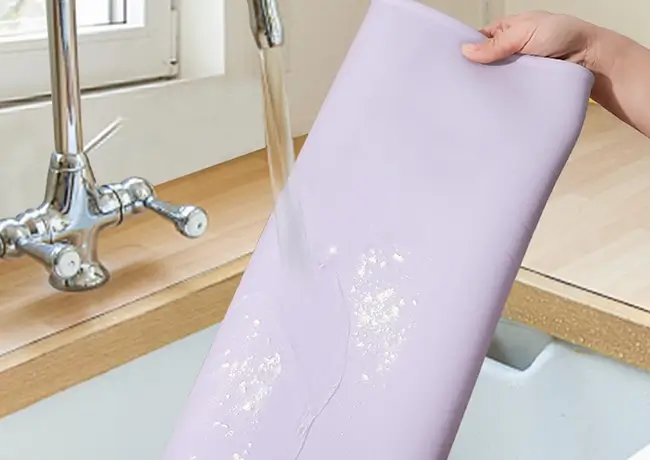
Proper care and maintenance are essential to ensure these mats remain in top condition for long-lasting use. These mats are best hand washed, instead of in the dishwasher, although most are labeled dishwasher safe. Let’s know the best practices for a clean silicone baking mats.
Hand Wash with Mild Soap: usage warm water and a mild dish soap to gently hand wash the silicone baking mat after each usage. Scrubbing pads and harsh cleaners should be avoided since they can harm the mat’s surface.
Use a Soft Sponge or Cloth: So, to scrub the mat fully, take a soft sponge or dry cloth ensuring to clean every fold or corner where food particles may be hiding.
Remove Stains: This can be done by putting the silicone mat in a warm water and baking soda solution for a few minutes to eliminate hard stains and residues. Next, with a sponge you can make it clean gently.
Dry Completely: When you are finished, clean the mat well and then either wipe it until dry or let the mat dry in the fresh air before putting it aside.
Storing Your Silicone Baking Mat
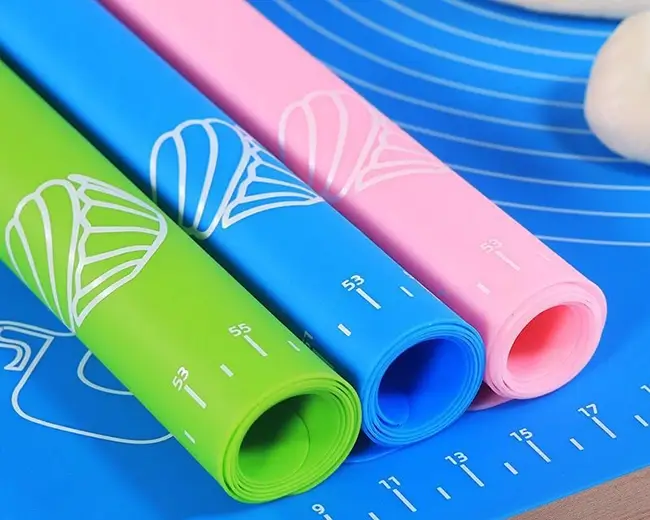
Flat Storage: The best possible way to place a silicone bakeware is either laying the flat surface or the folded bakeware.
Use a Storage Tube: To keep the mat from getting distorted when rolling it for storage, use a cardboard tube or a special storage tube.
Keep Your Silicone Baking Mat Away from Sharp things: By all means the silicone mat should be in a place which is out of contact with any tools or other sharp-edged things that may twist or puncture the material.
Avoid Extreme Temperatures: The mat’s flexibility and durability may be impacted by exposure to intense heat, sunlight, or extremely low or high temperatures.
Keep in a Clean, Dry Place: Keep the silicone baking mat in a kitchen or another clean, dry area.
You will have a long lasting baking mat with only a little effort when you make sure to follow these storage and cleaning instructions, and you can use it again for many years.
Common Questions About Using Silicone Baking Mats
Let’s address some common questions about using silicone baking mats to help you make the most out of this essential kitchen tool!
Are Silicone Baking Mats Safe?
Yes, silicone baking mats safe to use. Food-grade silicone, used in its construction, is non-toxic and devoid of dangerous substances like phthalates and BPA. To guarantee their longevity and safety, silicone baking mats must be used in accordance with the manufacturer’s recommendations, which include temperature restrictions and cleaning procedures.
How Hot Can You Bake with Silicone Mat?
Baking silicone mats are designed to withstand temperatures between 450 and 500 degrees Fahrenheit without compromising food safety. Thus, at 450 degrees, silicone mats are safe. Interestingly, most ovens do not go over this temperature limit.
How do you Store Silicone baking mat?
Baking silicone mats can be stowed in a roll or a flat way, depending on your available space. The mats definitely should not be folded or made tight as this might permanently damage them and their functionality could be compromised. Roll them up and check if they are not twisted and stiff at the same time.
Can you Use Silicone Mat for Other Cooking Methods?
The silicone baking mats, which are used mostly for baking in the oven can also be used for other cooking methods. Nevertheless, do not use silicone baking mats on direct fire or grill grates, which may cause the mats more heat than they can handle.
How Long Do Silicone Baking Mats Last?
Silicone baking mats are durable if you routinely clean and care for them. In order to prevent exhaustion, keep the mats clean after each use, avoid the use of sharp objects on the mats, and store them properly.
In conclusion, learning how to use silicone baking mats should be essential knowledge for every baker. These mats have a non-stick surface that helps promote evenness in baking as well as facilitates quick exit of the food items. By following simple tips like properly cleaning and storing your silicone baking mat, you can prolong its lifespan and enjoy hassle-free baking for many more recipes to come. Whether you’re baking cookies, roasting vegetables, or making delicate pastries, a silicone baking mat can be a valuable tool in your kitchen arsenal.